-
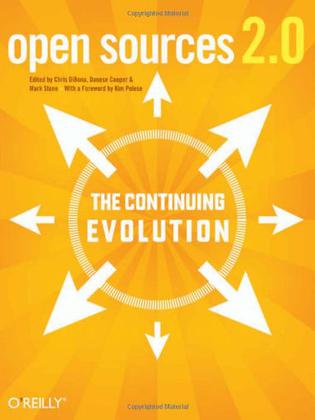
Open Sources 2.0
Open Sources 2.0 is a collection of insightful and thought-provoking essays from today's technology leaders that continues painting the evolutionary picture that developed in the 1999 book Open Sources: Voices from the Revolution . These essays explore open source's impact on the software industry and reveal how open source concepts are infiltrating other areas of commerce and society. The essays appeal to a broad audience: the software developer will find thoughtful reflections on practices and methodology from leading open source developers like Jeremy Allison and Ben Laurie, while the business executive will find analyses of business strategies from the likes of Sleepycat co-founder and CEO Michael Olson and Open Source Business Conference founder Matt Asay. From China, Europe, India, and Brazil we get essays that describe the developing world's efforts to join the technology forefront and use open source to take control of its high tech destiny. For anyone with a strong interest in technology trends, these essays are a must-read. The enduring significance of open source goes well beyond high technology, however. At the heart of the new paradigm is network-enabled distributed collaboration: the growing impact of this model on all forms of online collaboration is fundamentally challenging our modern notion of community. What does the future hold? Veteran open source commentators Tim O'Reilly and Doc Searls offer their perspectives, as do leading open source scholars Steven Weber and Sonali Shah. Andrew Hessel traces the migration of open source ideas from computer technology to biotechnology, and Wikipedia co-founder Larry Sanger and Slashdot co-founder Jeff Bates provide frontline views of functioning, flourishing online collaborative communities. The power of collaboration, enabled by the internet and open source software, is changing the world in ways we can only begin to imagine.Open Sources 2.0 further develops the evolutionary picture that emerged in the original Open Sources and expounds on the transformative open source philosophy. -
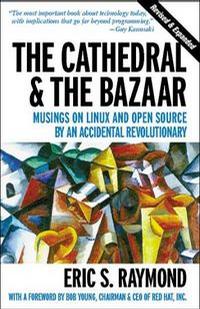
The Cathedral and the Bazaar
《大教堂与市集》(The Cathedral and the Bazaar)是埃里克·斯蒂芬·雷蒙(Eric Steven Raymond)所撰写的软件工程方法论。以Linux的核心开发过程以及作者自己主持开发的开放原始码软件──Fetchmail为讨论案例。文章在1997年5月27日发表,并在1999年出版成书。 本书讨论两种不同的自由软件开发模式︰ 大教堂模式(The Cathedral model)︰原始码在本模式是公开的,但在软件的每个版本开发过程是由一个专属的团队所控管的。作者以GNU Emacs及GCC这两软件为例。 市集模式(The Bazaar model)︰原始码在本模式也是公开的,不过却是放在因特网上供人检视及开发。作者以Linux核心的创始者林纳斯·托瓦兹带领Linux核心的开发为例,亦引用fetchmail的开发为例。 这篇文章的要义是让够多人看到原始码,错误将无所遁形(Given enough eyeballs, all bugs are shallow)。作者表示大教堂模式的软件开发让程序除错的时间大幅增加,因为只有少数的开发者可参与修改工作。市集模式则相反。 此文让大部份的开放原始码及自由软件的开发计划采用市集模式,甚至原来采用大教堂模式的 GNC Emacs 及 GCC 也是如此。Netscape 网页浏览器后来释出原始码,并启动Mozilla计划,也或多或少受到这篇文章的启发。 大教堂与市集也被延伸到非电脑软件的开发上面。例如维基百科就是市集模式,而Nupedia与大英百科全书就是大教堂模式。 欧莱礼出版社于1999年发行此书的创举是,首次商业印刷出版的书以Creative Commons授权模式出版。 本书(原文)的国际标准书号是 ISBN 1565927249(精装本)、ISBN 0596001088(平装本)。 -
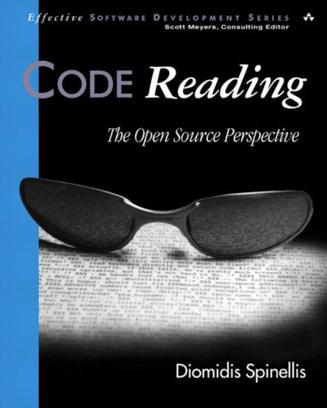
Code Reading
This book is a unique and essential reference that focuses upon the reading and comprehension of existing software code. While code reading is an important task faced by the vast majority of students, it has been virtually ignored as a discipline by existing references. The book fills this need with a practical presentation of all important code concepts, form, structure, and syntax that a student is likely to encounter. The concepts are supported by examples taken from real-world open source software projects. The focus upon reading code (rather than developing and implementing programs from scratch) provides for a vastly increased breadth of coverage. -
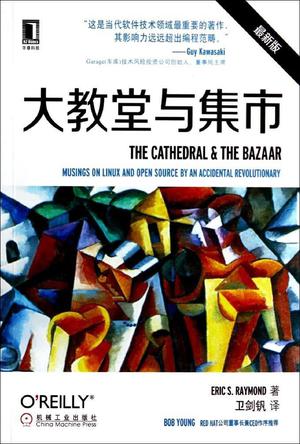
大教堂与集市
当代软件技术领域最重要的著作,中文版首次出版! 《大教堂与集市》是开源运动的《圣经》,颠覆了传统的软件开发思路,影响了整个软件开发领域。作者Eric S. Raymond是开源运动的旗手、黑客文化第一理论家,他讲述了开源运动中惊心动魄的故事,提出了大量充满智慧的观念和经过检验的知识,给所有软件开发人员带来启迪。本书囊括了作者最著名的“五部曲”,并经过作者的全面更新,增加了大量注释,提高了可读性,是经典收藏。 开源运动对软件业和互联网带来了巨大影响,本书作为开源运动的独立宣言,其影响力远远超出编程领域,如果想在互联网时代做生意,这本书是必读经典。 详细内容: 本书是开源运动的独立宣言,它清晰、透彻和准确地描述了开源运动的理论与实际应用,对开源软件运动的成功和Linux操作系统的广泛采用,都起到了至关重要的作用。 作者Eric S. Raymond是开源运动和黑客文化的元老级人物,他是INTERCAL编程语言的主要创作者之一,是Fetchmail程序的作者,并为EMACS编辑器作出过贡献。1997年以后,他成为开放源代码运动的主要理论家,以及开放源代码促进会的主要创办人之一。 作者观察到,在互联网世界里,有一种与传统软件开发模式(大教堂模式)截然不同的全新的模式:集市模式。大教堂模式是封闭的、垂直的、集中式的开发模式,反映一种由权利关系所预先控制的层级制度;而集市模式则是并行的、点对点的、动态的多人协同开发模式,开发者之间通常仅仅靠互联网联系,在这种貌似混乱而无序的开发环境中,居然产生了质量极高和极具效率与生命力的软件,产生了诸如Linux这种世界级的操作系统,这是怎么做到的呢? 作者通过亲自实践,研究了这种模式的成功原因和主要特点,给出了19条软件开发的真知灼见,解释了黑客愿意无偿贡献自己代码的动机,研究了开源软件的经济动力和盈利机制,并预测了软件业将必然面临的根本性变革。 作者在书中对“黑客”(hacker)这一通常被误用的称呼做了正名,指出黑客并不是计算机犯罪分子,而是醉心于软件和网络的编程高手,是乐于分享和喜欢突破极限的问题解决专家、天才发明家和艺术家。对于想要成为一名黑客的读者,作者指出了黑客应具备的基本态度、黑客和骇客的本质区别、黑客应有的格调和如何掌握黑客的基本技能,作者指出:黑客文化靠声誉运转,只有当其他黑客一致称你为黑客时,你才是黑客。 本书囊括了作者被业界称为“五部曲”的核心著作:“黑客圈简史”(A Brief History of Hackerdom)、“大教堂和大集市”(The Cathedral and the Bazaar)、“如何成为一名黑客”(How To Become A Hacker)、“开拓心智层”(Homesteading the Noosphere)和“魔法锅”(The Magic Cauldron)。其中最著名的当属“大教堂和大集市”。本书在开源运动中的地位相当于基督教的《圣经》,用黑客们的话说,这是“黑客藏经阁”的第一收藏。 本书并不只是在讲开源和黑客,所有关心软件开发和IT发展的人,都应该花些时间通读全书,书中给出了大量充满智慧的观念和有趣的知识,如命令体系、礼物文化、以少成多、内部市场、竞次、反公地模型、委员会设计、同侪声誉、模因工程、SNAFU现象、进化不利条件、软件业是服务行业、组织结构决定产品结构、准入门槛越低稳定性越高、程序员是资产而非成本等,这些内容一定会给你带来新的启示和思考。 -
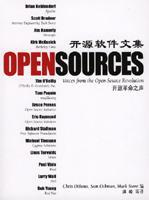
开源软件文集
开源软件是当今计算机工业界最具活力的领域,例如Linux这个公开了源代码的UNIX 操作系统在服务器市场上已经与许多大公司的产品分庭抗礼,而且日趋上风。Tim O'Reilly 先生曾说过一句名言:“开源软件是计算机工业最宝贵的财富”。 这部著作收录了全球各位著名的开源软件运动的先锋(Brian Behlendorf,Larry Wall, Linus Torvalds,Tim O'Reill -
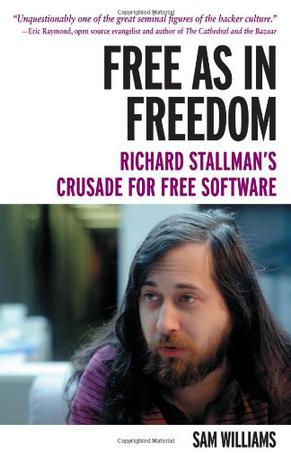
Free as in Freedom
This text interweaves biographical snapshots of GNU project founder Richard Stallman with the political, social and economic history of the free software movement. Starting with how it all began - a desire for software code from Xerox to make the printing more efficient - to the continuing quest for free software that still exists today. The goal of the book is to document how Stallman's own personal evolution has done much to shape notions of what free software is and should be. Like Alan Greenspan in the financial sector, Stallman has assumed the role of tribal elder in a community that bills itself as anarchic and immune to central authority. This book looks at how the latest twists and turns in the software marketplace have done little to throw Stallman off his pedestal. Discover how Richard's childhood and teenage experiences as well as his years at Harvard and MIT made him the man he is today. The book's narrative style includes many quotes from Richard and his mother about his life, education, and work providing a look at RMS and Free Software Foundation (FSF). Throughout the book are insights from FSF supporters, detractors, the early MIT hackers, and those who knew him in high school and college. If anything, the current software marketplace has made Stallman's logic-based rhetoric and immovable personality more persuasive. In a rapidly changing world people need a fixed reference point, and Stallman has become that reference point for many in the software world.